MXA RACE TEST: 2017 KAWASAKI KX250F — ATTITUDE ADJUSTMENT
Click on images to enlarge
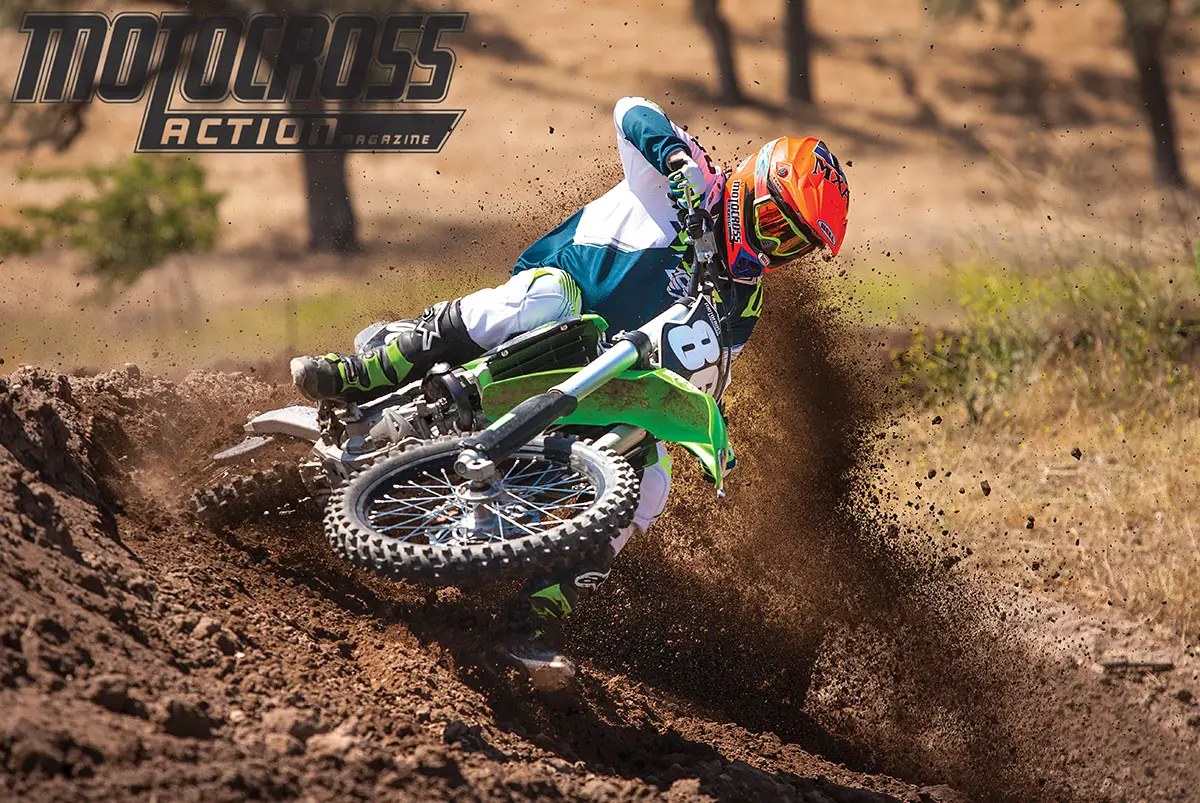
Q: FIRST AND FOREMOST, IS THE 2017 KAWASAKI KX250F BETTER THAN THE 2016 KX250F?
A: We loved the last-generation KX250F engine. Our love was muted a little by the Austrian engineers’ ability to get 44 horses out of their high-rpm powerplant, not to mention the YZ250F’s all-around package, but every MXA test rider loved the way the 2016 KX250F ran. What’s odd is that while the test riders loved the KX250F’s power profile, they were lukewarm about every other aspect of the bike. For 2017, however, we have changed our minds.
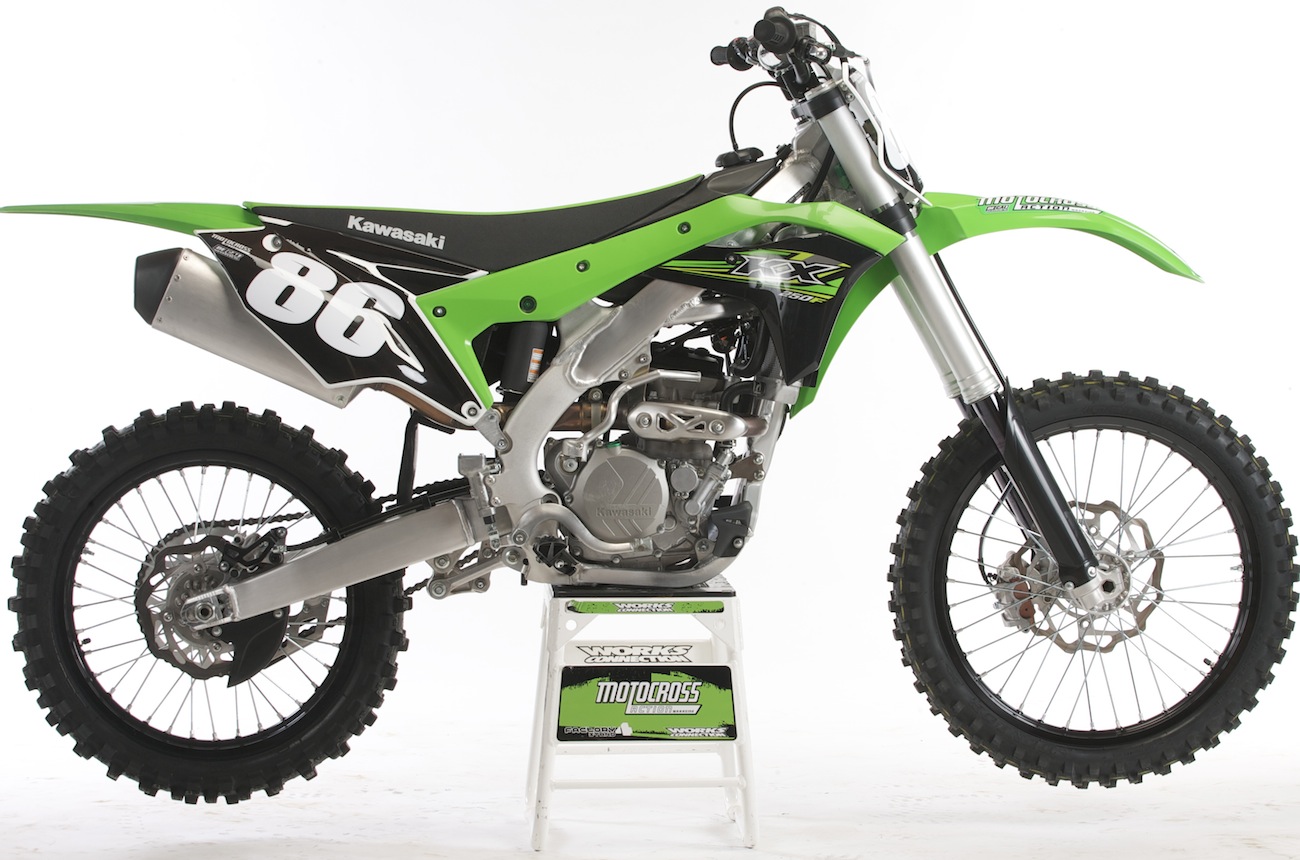
Q: WHAT HAS KAWASAKI CHANGED ON THE KX250F FOR 2017?
A: You’ve read the words “all new from the ground up” many times, only to discover that only the graphics were changed. Thankfully, the 2017 Kawasaki KX250F is all new from the ground up, with these caveats: First, Kawasaki carried over the Showa SFF single-spring front fork, although internally the settings have been revised. Next, the adjustable options, such as the footpegs, bar clamps and EFI couplers, are still in place. As for the rest of the bike, it’s new from the ground up. Here is a list of changes made to the 2017 Kawasaki KX250F.
(1) Lean angle. The cylinder has a 7-degree forward lean angle. Last year it was 14 degrees. The goal was to make a more direct line to the intake charge.
(2) Duel injectors. The KX250F is the only bike in its class with dual injectors. For 2017 Kawasaki redesigned the downstream injectors with eight injector holes for greater atomization. The injectors now have a 13.2-degree-greater lean angle to match the angle of the cylinder.
(3) Rod bearing. The big-end rod needle bearing has been replaced with a metal bearing to reduce mechanical loss.
(4) Cylinder head. The combustion-chamber configuration has been revised to increase efficiency via a smoother airflow. The base of the cylinder now matches the cases thanks to Plateau Honing. Additionally, the 2017 KX250F also gets an offset cylinder (in that the center of the cylinder and center of the crank do not align) to lessen decompression braking.
(5) Piston. The 2017 piston has a bridged-box design with a molybdenum coating to reduce wear. The piston is 6 grams lighter.
(6) Valve train. Kawasaki made four changes to the valve train. (a) Kawasaki used titanium valves that are similar to what Kawasaki uses on its sport bikes. (b) The exhaust camshaft has increased lift. (c) The camshaft sprocket is lighter. (d) The camshaft chain thickness has been reduced to save 18 grams.
(7) Flywheel. The flywheel is now lighter at 9.0 kg/cm2 for quicker revving. Kawasaki offers two optional flywheels—one lighter and one heavier.
(8) Intake. For 2017 the giant air vent on the right side of the airbox has been sealed up. The left side is still wide open.
(9) Exhaust. The header is now narrower. The mounting of the muffler has been moved down to help with mass centralization.
(10) ECU. The settings have been updated to match the internal engine updates, downdraft intake layout and injector atomizing angle changes.
(11) Frame. The aluminum perimeter frame is 1.3 inches narrower across the radiator shrouds and 0.25 inch slimmer across the main spar’s widest point. The down tube of the frame is now cast aluminum, and overall rigidity has been increased.
(12) Subframe. The bracket for the seat hook has been revised to increase durability.
(13) Swingarm. The swingarm has been updated for increased torsional rigidity. The engineers did this by thinning the walls and making the top plate thicker. These changes have lightened the swingarm significantly.
(14) Linkage. The shock link has been extended 1mm, and the knuckle has been lengthened on all three sides.
(15) Forks. The Showa SFF Type 2 forks have a stiffer 9.8 N/m spring (up from 9.6 N/m). The inner fork tubes have also been thickened.
(16) Triple clamps. The beefier lower clamp that the KX450F got in 2016 has been passed down to the KX250F. It is thicker, more rigid and increases the clamping surface.
(17) Shock. The Showa shock has updated settings, as well as a lighter spring.
(18) Tires. We never liked the stock Dunlop MX51 tires that came on the Kawasakis. The KX250F now comes shod with Dunlop MX3S’ front and rear.
(19) Seat. The seat is much flatter front to back due to a redesigned fuel-tank shape.
(20) Tank. The tank’s filler hole has been lowered 20mm to lower the fuel’s center of gravity.
(21) Radiator. The radiators have been angled inward in a reverse-V layout that contributes to a slimmer profile at the radiator wings.
(22) Bodywork. The plastic has been restyled front to back.
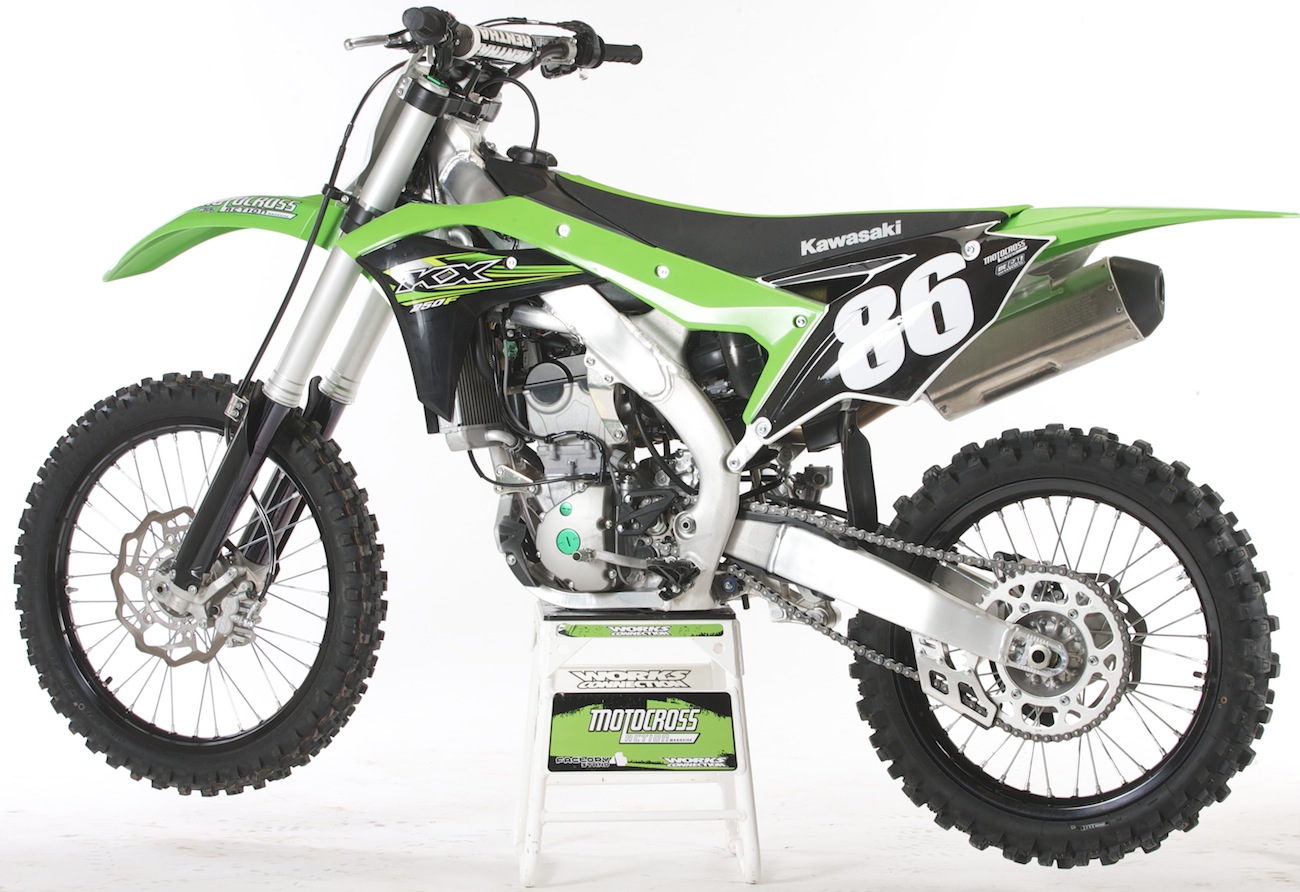
Q: DOES THE KX250F POWERBAND STILL HAVE ITS SIGNATURE MIDRANGE PUNCH?
A: No. Just as the Kawasaki engineers killed the 2016 KX450F’s midrange punch, they did the same with the 2017 KX250F. And although the 2016 KX450F had the same horsepower as the brutish 2015 model, the 2017 KX450F felt slower. This is significant, because the 2017 KX250F also lost some of its punch without losing any peak horsepower. The KX250F’s power is deceiving. Instead of hitting hard and rocking you back in the saddle, as it did in 2016, the 2017 KX250F’s power is more linear. It gets the power to the ground and tracks incredibly straight. There is no doubt that the MXA test riders miss the excitement of last year’s hard-hitting thrill ride, but we’re big enough to admit that we can
go faster without it.
In a strange twist of fate, if you loved the 2016 KX250F’s punchy powerband, you can get it on the 2017 Yamaha YZ250F.
Q: HOW DOES THE BIKE PULL ON TOP?
A: We love that the KX250F engine never falls off. It allows the weight of the bike to continually pull back. You could keep the KX250F tapped in any gear and it will just keep pulling. This high-rpm attack was helped by a soft rev limiter that allowed us to squeeze an extra 20 feet out of the gear that we really should have shifted out of earlier. This is especially helpful when you are tantalizingly close to the corner and a shift point at the same time. In that case, rather than shift, we revved the KX250F’s guts out and let the rev limiter ping pong off the wall. It didn’t sound good, but it worked.
Q: HOW DOES THE KX250F’S POWERBAND STACK UP AGAINST THE COMPETITION?
A: After our first ride, we thought that we hated the new KX250F powerband. Compared to the 2016 power delivery, it seemed listless. It didn’t light our fire. Yeah, yeah, yeah, we could tell that it was easy to ride, very linear in its delivery, stayed connected to the ground and revved to the moon; but, we missed the previous hammerhead powerband. The 2016 engine screamed, “I’m fast!” every time you twisted the throttle.
Then, we raced the 2017 Kawasaki KX250F. That was an eye-opener. It was faster than we thought. It was easier to ride than we thought. It revved higher than we thought. One by one, the MXA wrecking crew admitted that it was possible to go faster on the slower-feeling 2017 KX250F than on the caffeinated 2016 bike. If it had a negative, it was that it wasn’t as effective at gun-and-run as the hard-hitting, instant-on, 2016 powerband. If you shifted the 2017 engine too soon, it didn’t have the grunt to pull out of it without a touch of the clutch—or perhaps two touches of the clutch.
The real question is whether it is faster than the red, yellow, blue, orange and white competition; the answer is a mixed bag. Don’t be surprised to learn that the 2017 KX250F gives up almost 4 horsepower to the KTM 250SXF and Husky FC250. These two high-rpm missiles make the most power of any bikes in the 250 class and do it with a pro-level, high-rpm approach. If you are looking for a bike with comparable horsepower to the 2017 KX250F’s 40.06 horsepower, you need look no further than the 2017 Yamaha YZ250F. It makes 40.93 horsepower—and it does it in a distinctly Kawasaki manner. The Honda CRF250 and RM-Z250 aren’t in the running against the KTM, Yamaha, Husqvarna or Kawasaki.
What is most noticeable about the 2017 KX250F powerband is how mellow and broad it feels. It lacks burst, which means that on the exit of a corner next to a bike with stronger low end, you might lose a bike length. On the dyno, the 2017 made less or the same horsepower as the 2016 model from 6000 rpm all the way to 9300 rpm. Then, the 2017 was one horsepower better from 9500 to 11,500. By 12,000 rpm the 2017 produced either less or the same horsepower all the way to sign-off, which was at 13,400 rpm.
This is a really good lap-time engine; it’s just not much of a drag-race engine.
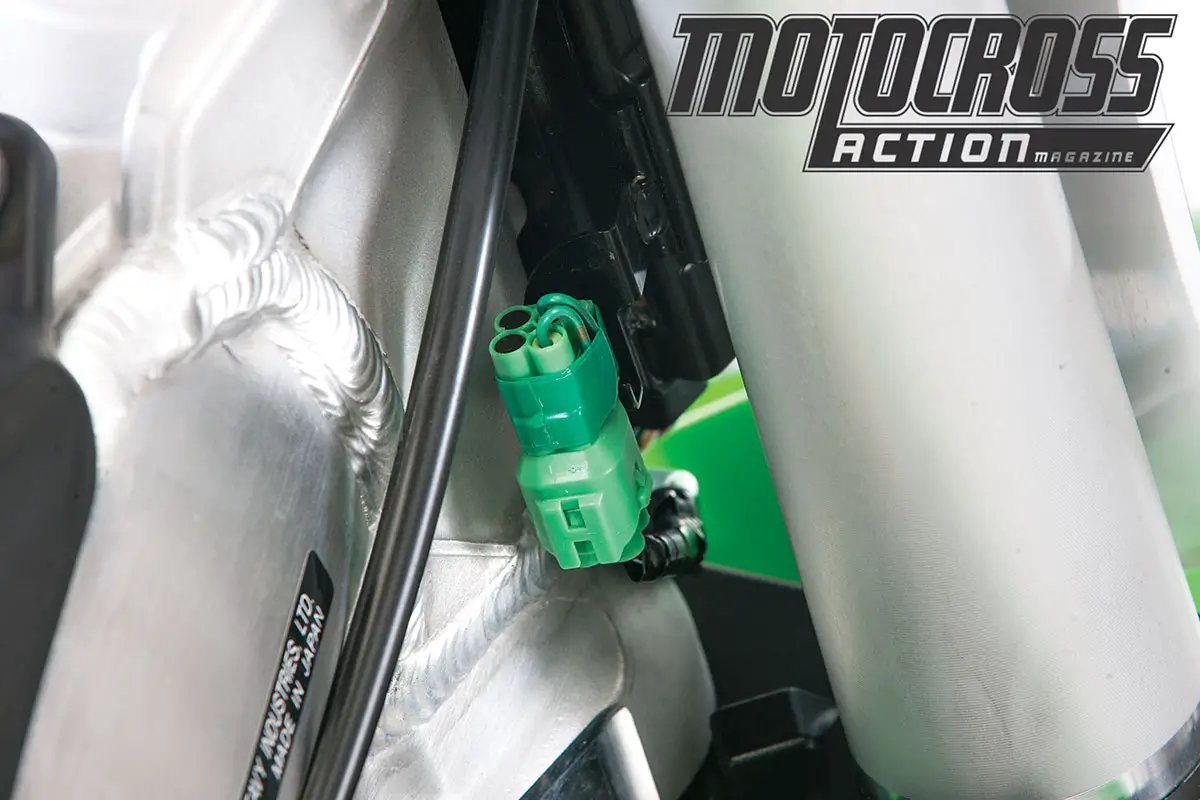
Q: WHAT ONE CHANGE NEEDS TO BE MADE TO THE KX250F RIGHT OFF THE BAT?
A: Unless you’re an entry-level rider or interested in riding on ice-skating rinks, immediately remove the stock green coupler and install the aggressive white coupler. The soft black coupler is useless. The white coupler has slightly less response off the bottom but comes alive from mid to top. It is a game-changer.
Q: HOW DOES THE BIKE HANDLE?
A: If we are comparing the handling to last year’s bike, it is day-and-night different. The 2016 chassis made us leery of the front end. It would turn, but it didn’t really want to. Getting into a rut and staying there was as difficult as a blind man trying to find his car keys. The chassis was a nightmare to balance out. We would have to turn the preload all the way out, slide the forks up in the clamps and raise the sag to get enough weight on the front wheel so it would stick. It was, in a uniquely Kawasaki fashion, stodgy.
The 2017 KX250F chassis is a breath of fresh air. The bike feels balanced right off the bat. If anything, it had a bit of oversteer, which was easily fixed by adjusting the spring preload on the forks by a few clicks. It tracked straight and entered corners with precision. Both ends of the bike followed each other extremely well, making it easy to put the bike where you wanted it. This made the bike effortless to ride. Riders’ confidence skyrocketed with the precise handling and user-friendly interface.
Q: HOW ARE THE ERGONOMICS?
A: Many people overlook how important the ergonomics of a bike are. This is how the bike feels underneath you—from your fingertips to your toes. Of course, ergos are largely a matter of taste, riding style and body size. We think that for the most part the Kawasaki has universal fit and feel. It has an extremely flat profile and is a breeze to slide back and forth on. If we heard one complaint, it came from the shorter test riders who thought the seat height was too tall, even when we gave them more race sag. If the cockpit feels too small, the KX250F has handlebar and footpeg mounts that allow the bike to be stretched for bigger riders.
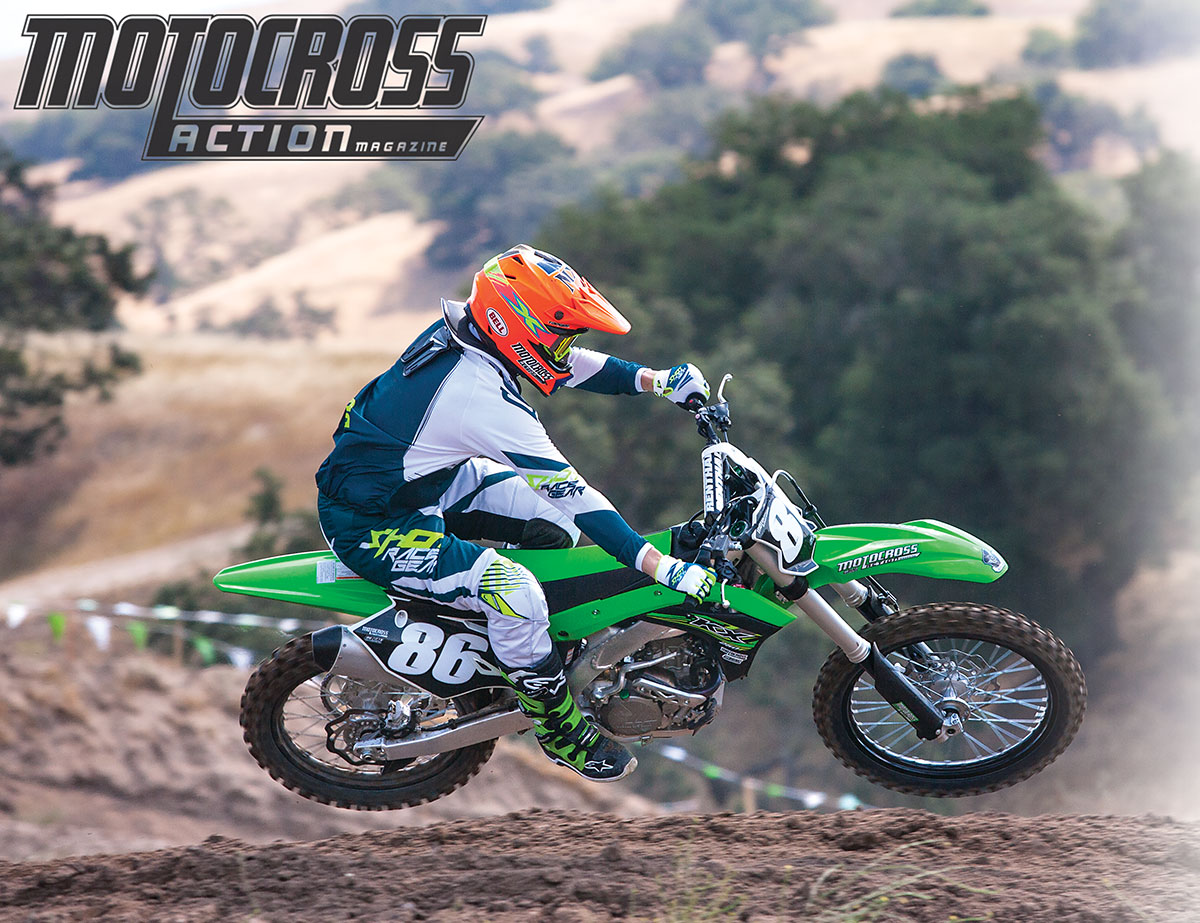
Q: HOW DID THE SHOWA SUSPENSION WORK WITH THE NEW CHASSIS?
A: The combination of the new chassis and the updated Showa components worked hand in hand. Other than setting the sag to the recommend 105mm, our testers pretty much left the shock alone. It tracked great, absorbed chop and did not have the wallowing characteristic that previous Kawasakis were prone to.
Most of our attention was focused on the Showa SFF forks. Do not confuse these forks with Showa SFF TAC forks. The KX250F forks are not air forks—and for that we are grateful. They have a coil spring in one leg and damping in the other. Originally introduced in 2011, the SFF forks have had a rocky lifespan. With each passing year, the baseline settings have improved slightly, as Kawasaki has focused on targeting a wider range of riders. What’s particularly unique about the SFF fork is that the preload can be adjusted to either raise or lower the ride height. The spring preload adjuster has 40 adjustable clicks.
The 2017 SFF forks are the best of the SFF bunch. Most important, they are easily tunable. Fast riders could run the compression clickers at 16 clicks out, while slower riders could go out to 20 clicks. Additionally, by changing the preload on the spring rate for the initial part of the stroke, the spring rate could be softened or stiffened. As a rule of thumb, faster riders went in on the preload clicks and slower riders went out (preload clicks are counted by turning the adjuster all the way out and then counting the number of clockwise clicks in). Be forewarned that one click makes a big adjustment on the fork spring’s preload. Make small adjustments until you get the chassis to feel level, then resort to the compression clicker to iron out any mid-stroke harshness.
The 2017 SFF forks are a big improvement over last year—much more tunable, easier to live with and, as a bonus, coil springs don’t get air leaks. We have to assume that the new chassis plays a big role in how much better the forks feel, because after six years, this was the biggest step up that SFF has ever made. Overall, the Showa components, front and rear, are a great match for the new chassis.
Q: WHAT DOES IT WEIGH?
A: Last year the 2016 KX250F weighed 226 pounds (without gas). This year it weighs 221 pounds. The engine accounts for 1.75 pounds of weight loss, while the chassis lowers the additional tonnage. This is not the lightest 250 four-stroke made; but, for a change, it’s not the heaviest.
Q: WHAT DID WE HATE?
A: The hate list.
(1) Clutch. The light feel of the clutch is awesome, but it doesn’t last. Put stiffer springs in or don’t use it.
(2) Engine. We have a love/hate relationship with the engine. Yes, it’s easy to ride and gets the power to the ground, but the old engine got things done quicker and was more fun.
(3) Couplers. We like that Kawasaki includes mellow (black), stock (green) and aggressive (white) couplers, but we are pretty sure that the white one should be the stock choice.
(4) Airbox. The large vents on both sides of the last year’s have been reduced to one side only. The right side is fake, which reduces how much water can get to your air filter when washing the KX250F.
(5) Chain guide. Every KX250F owner should have T.M. Designworks’ phone number on speed dial. Take our word for it, you will be calling this number: (541) 772-4161.
(6) Launch Control. If we didn’t use it on last year’s harder-hitting engine, we probably don’t need it on the 2017’s mellow mill.
(7) Rear brake pedal. If you are a rider who likes to run the rear brake pedal low, you will have issues with the KX250F’s adjustment range.
Q: WHAT DID WE LIKE?
A: The like list.
(1) Ergonomics. The feel of the controls, seat height and bar position couldn’t get much better. If you’re tall, the bars and pegs are adjustable.
(2) Paper thin. The KX250F is the slimmest in its class.
(3) Tires. We are big fans of the Dunlop MX3S tires.
(4) Showa SFF forks. We were never wild about these forks, but they are night-and-day better than in the past. We think they could give Kayaba SSS forks a run for their money. Plus, we are so tired of living with Showa SFF TAC air forks that a coil-spring fork is a breath of fresh air.
(5) Powerband. Although the powerband wasn’t inspiring, we loved that it was smooth from bottom to top.
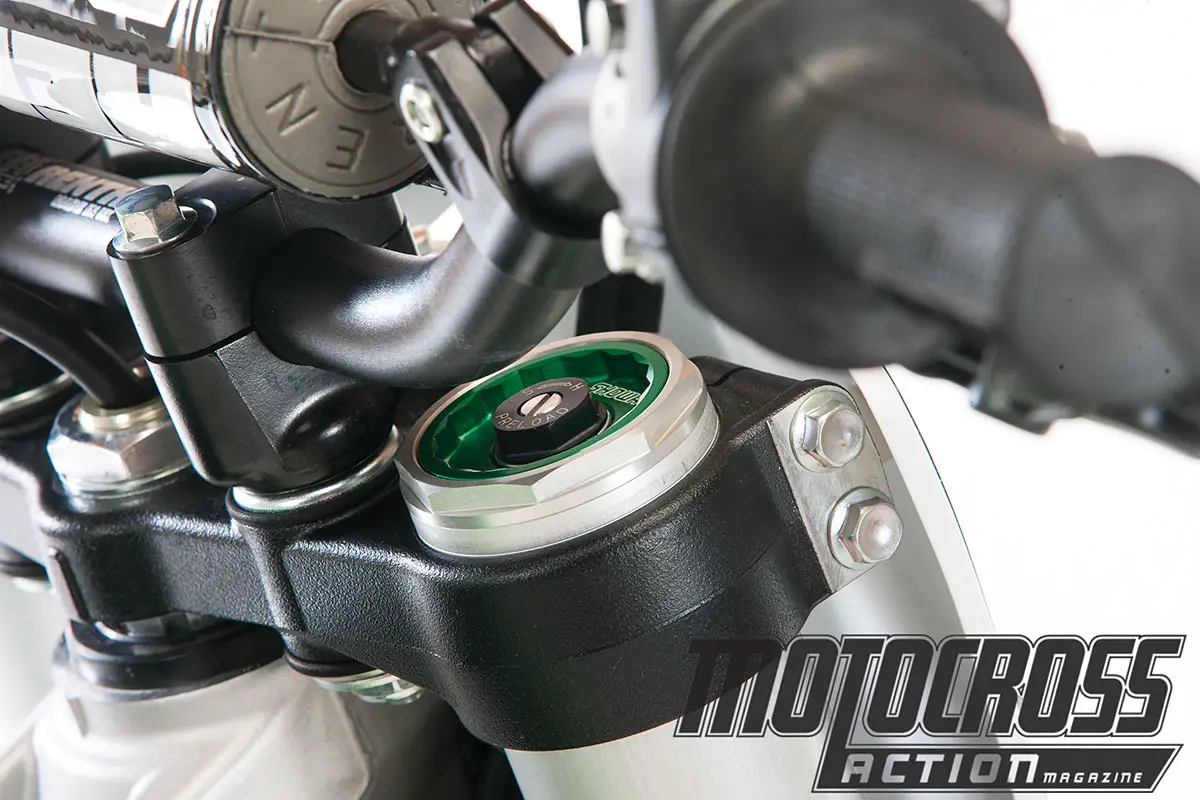
Q: WHAT DO WE THINK OF THE KX250F AS A COMPLETE PACKAGE?
A: In our honest opinion, this is a much better KX250F than in the past. It has great handling, superb ergos, dialed suspension and a broader, easier-to-ride powerband. The problem is that for it to be competitive, it would have to squeak up to the 44-horsepower ballpark of the stock FC250 and KTM 250SXF. Still, the engine part of the equation is a push. The new engine is smoother than the old engine, but the old engine was more exciting. The powerband is different, maybe too different for loyal green riders. Both the 2016 and 2017 power profiles have pluses and minuses. It is the rest of the 2017 KX250F package that makes it so much better than last year’s bike. We applaud Kawasaki for paying so much attention to ergonomic and suspension details. It was one of the easiest bikes for us to dial in. But, we like to have our cake and eat it too.
MXA’S KAWASAKI KX250F SETUP SPECS
This is how we set up our 2017 Kawasaki KX250F for racing. We offer it as a guide to help you find your own sweet spot.
SHOWA SFF TYPE 2 FORK SETTINGS
These may look like the same forks that came on the KX250F last year, but they sure don’t feel like them. The spring rate is upped from 0.97 N/m to 0.98 N/m. The new setup gives the forks a more progressive feel. To get the bike balanced, we played with the preload adjuster. Just one click makes a big difference. We found our sweet spot by going a few clicks in either direction. Initially, the front end had a bit of oversteer, but we could mitigate this with fork-leg height or preload. For hardcore racing we recommend this fork setup for the 2017 Kawasaki KX250F (stock specs are in parentheses):
Spring rate: .98 N/m
Preload: 6 clicks in (8 clicks in)
Compression: 16 clicks out (8 clicks out)
Rebound: 15 clicks out (16 clicks out)
Fork-leg height: Standard
Notes: The standard compression setting is stiff. Go out until you hit the sweet spot.
SHOWA SHOCK SETTINGS
After we set the sag to the recommended 105mm, the stock settings were already in the ballpark. We went all over the map but still ended up close to the stock setting. Riders over 185 pounds will need to stiffen up the compression. For hardcore racing we recommend this shock setup for the 2017 Kawasaki KX250F (stock specs are in parentheses):
Spring rate: 52 N/m
Race sag: 105mm
Hi-compression: 2-1/2 turns out
Lo-compression: 10 clicks out (11 clicks out)
Rebound: 9 clicks out (10 clicks out)



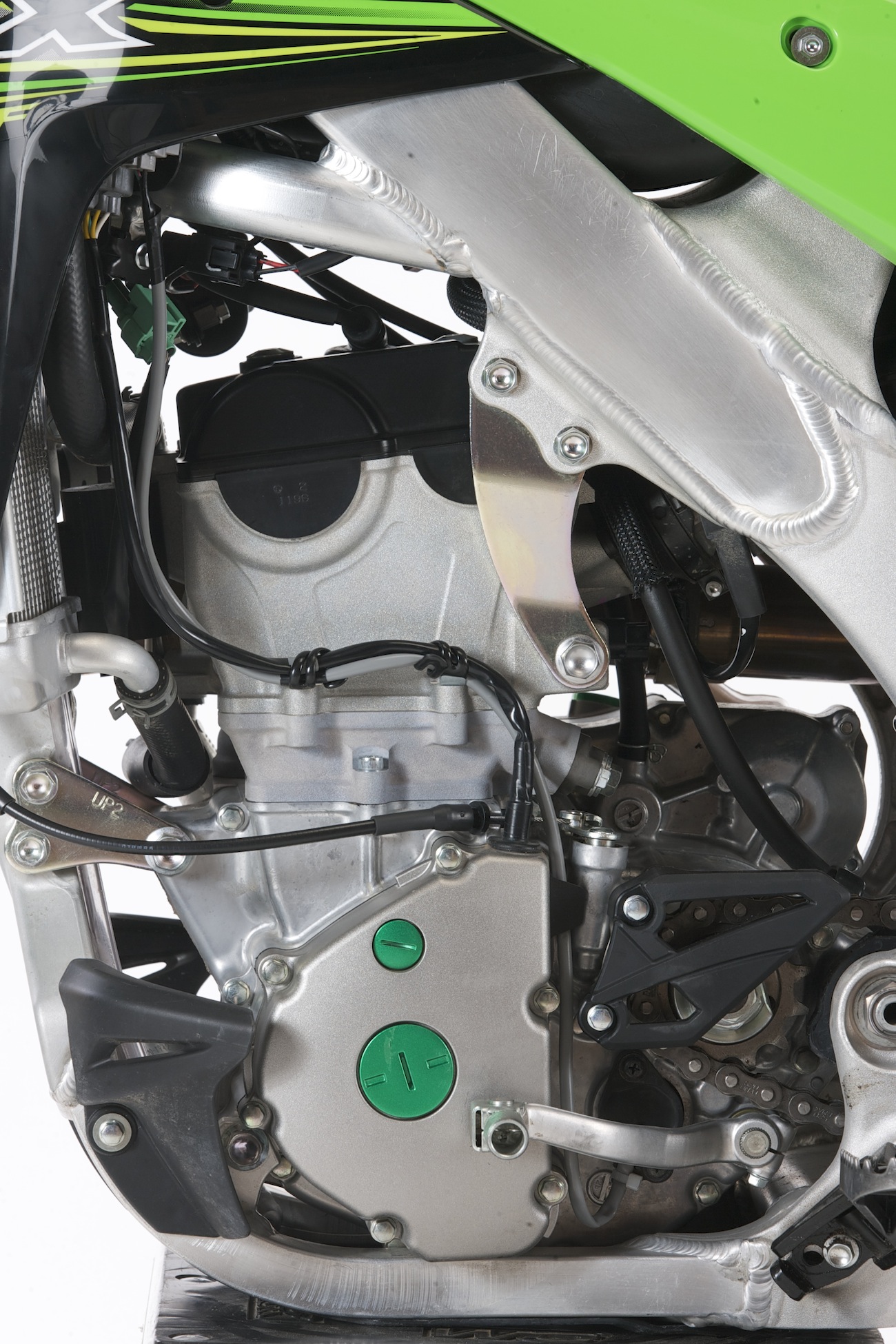

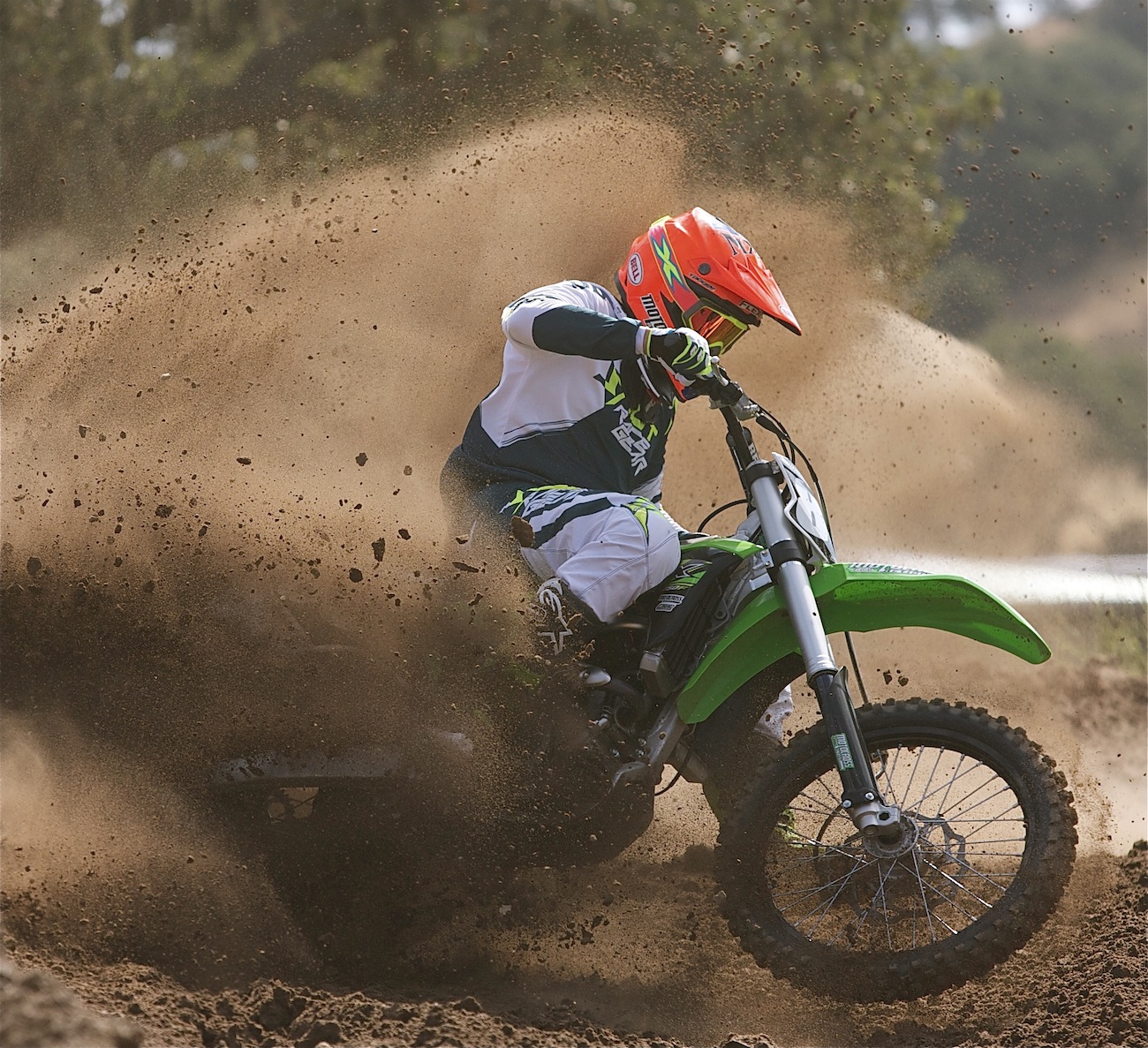
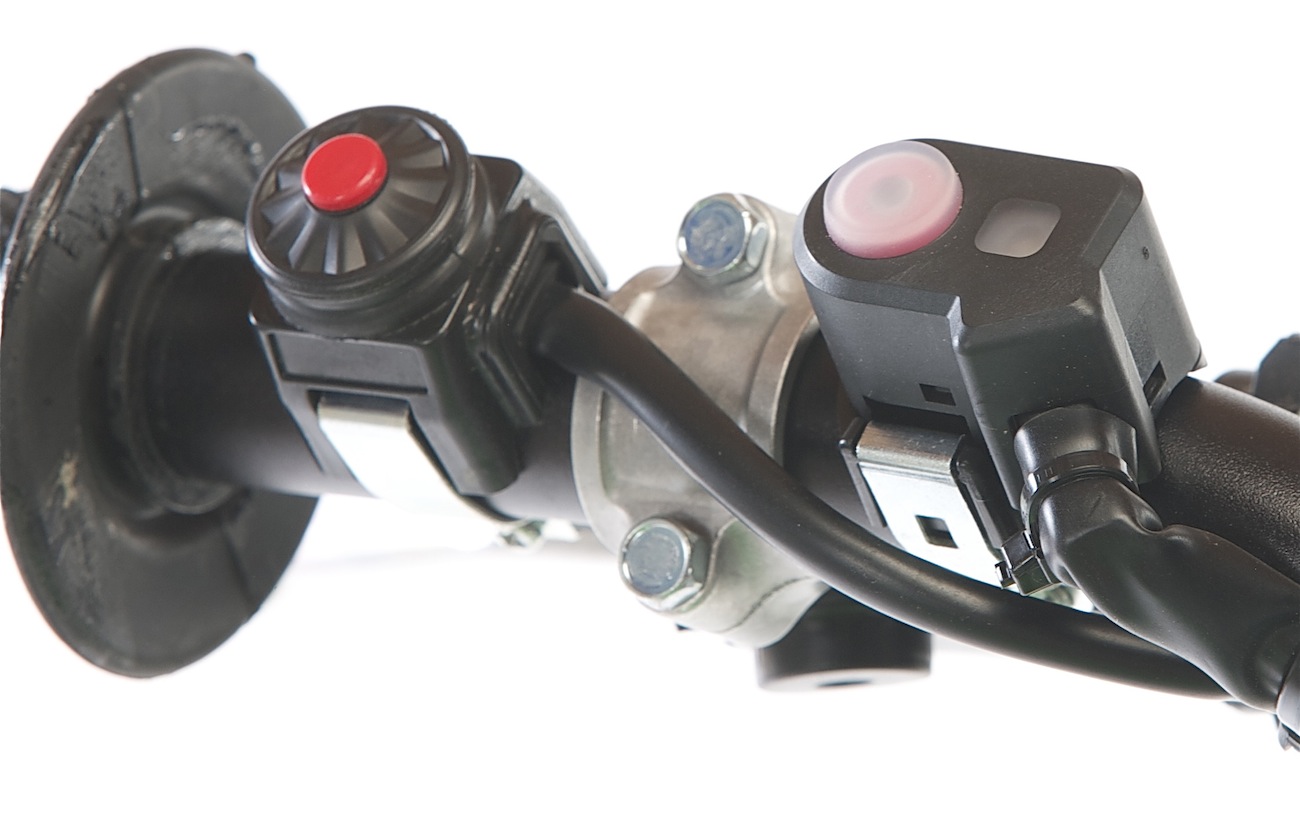
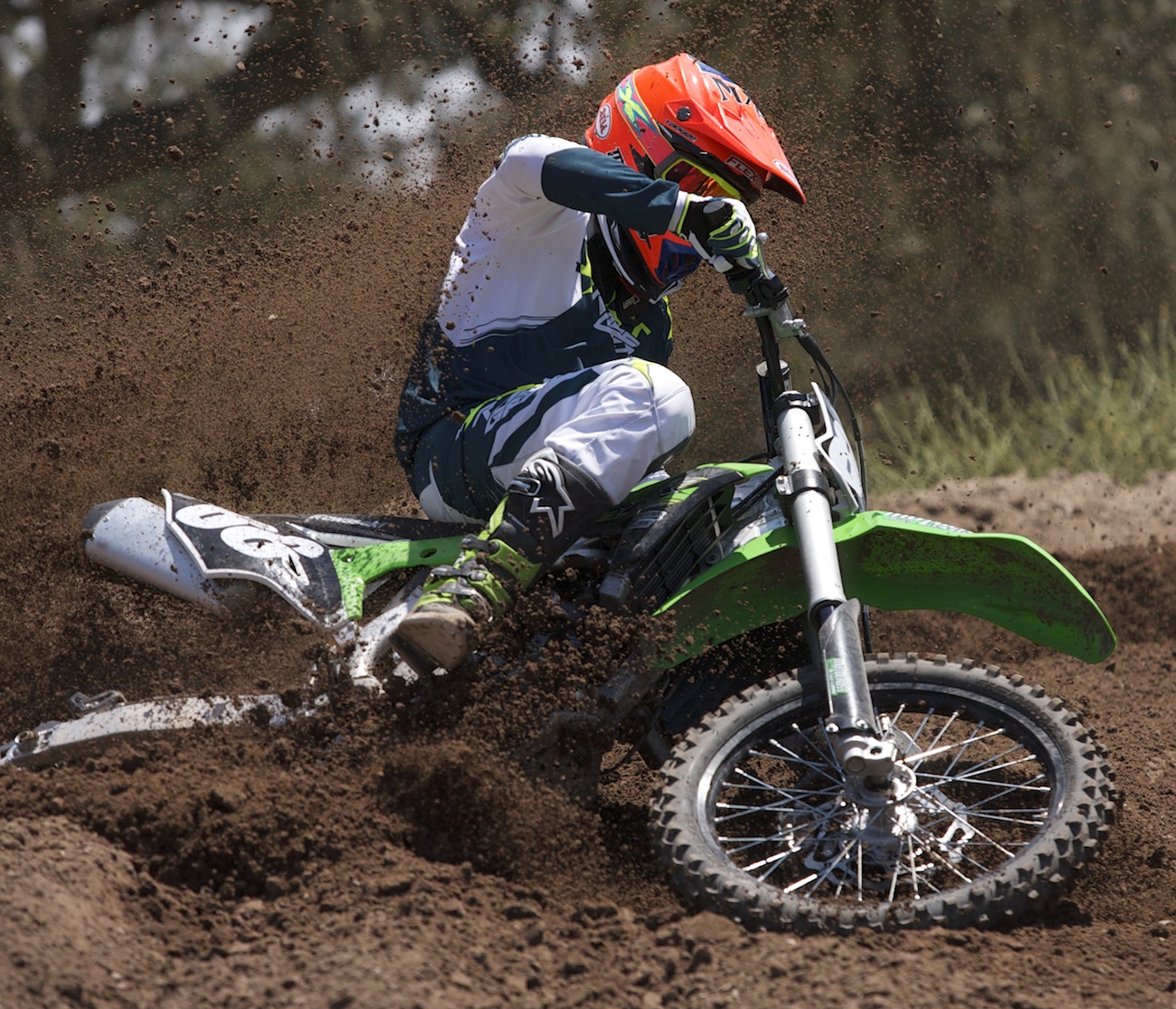




Comments are closed.